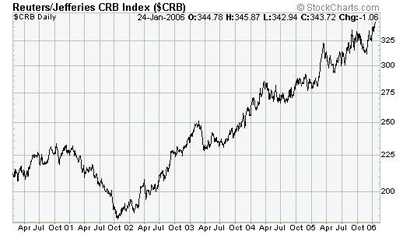| Home | About Us | Resources | Archive | Free Reports | Market Window |
|
Editor's note: If you want to learn more about how to start investing in oil right now, you can also read Tom Dyson's essay Three Oil Sand Investments No One's Thought Of. Investing In Oil Sands: Alberta's Dirty Secret is Out...By
Thursday, January 26, 2006
54,360 square miles. That is the extent of the Alberta Tar Sands in Western Canada. It's comparable to the total land area of Florida... but there's much more oil in the Alberta Tar Sands than in Florida. In fact, more oil is locked in this deposit than in all of the Middle Eastern countries combined. However, tar sands oil is very different from what the sheiks pump out of the ground... it's dirty, literally. But that dirty oil is one of the most important petroleum deposits in the world... a deposit that will make a handful of oil investors very wealthy over the next few decades. Let me explain. The oil in the Alberta Tar Sands is like soda that has gone flat. Imagine a normal oil deposit is like a regular bottle of soda. The oil is mixed with gas and under pressure. If the bottle cap leaks, then the gas escapes and the soda goes flat. Leave a glass of soda in your car in the summer, and the soda will evaporate into thick syrup. That's essentially what happened to the oil in the Alberta Tar Sands. It leaked into an ocean and all the light fractions were lost. The heavy oil mixed with the bottom sediments. The remaining material, called bitumen, is similar to molasses mixed with water, sand, and clay. Dirty oil! There are two processes to get the oil out of the Alberta Tar Sands. The first is pit mining. Large excavators load the tar sand into even larger dump trucks. It's the ultimate economy of scale. These trucks are so big that their tires are the biggest expense out there. Really! The tires cost so much money that production is often reported in terms of tread wear. CBS aired a 60 Minutes special on the Alberta Tar Sands project last Sunday. They interviewed the driver of one of these humongous dump trucks. There are 14 steps to get up to the cab of the truck. That's like driving from the second floor of your house. Mining is only the first step, however. Once out of the ground, tar sand oil must be separated from the dirt and muck. They use a process similar to a washing machine. The sand falls to the bottom, and the oil rises to the top of the water. The oil is skimmed off the top and sent away for processing. The second way to get the oil out of the Alberta Tar Sands is a process called SAGD – steam assisted gravity drainage. With this method, two wells are drilled into the tar sands, one above the other. The upper well uses steam to heat the sediment in place. The hot oil collects in the lower pipe and gets pumped to the surface, sand free. Once the oil is treated, the end product is one of the best light, sweet crude oils on the market. Best of all, this sweet crude oil is coming from Canada... and the last time I checked, nobody was lobbing missiles near the Alberta Tar Sands. Since the 60 Minutes clip aired, a few of the main oil sands companies like Suncor Energy(SU) jumped in price. Suncor is up over 20% in less than a month. Interest in this oil investment is high. My advice is to wait for a cool off before investing in oil sands... Wait for a healthy correction in oil price... and then make a long-term investment in “dirty” oil. Suncor is a great way to do this. Good Investing, Matt Badiali Market NotesTHE CHART OF THE WEEK… OF THE YEAR… OF THE DECADE Gold… copper… coffee… zinc… platinum… oil… sugar… uranium… every time we open our paper in the morning, we read about at least one commodity hitting a new multi-year high. Below is a look at what the most popular measure of commodities, the CRB Index, has done over the past six years:
The profit opportunity here is tremendous… as Steve Sjuggerud put it in the latest issue of True Wealth: “You can make a fortune over the next few years simply by owning the companies that supply China with the resources they need to keep building — the lumber, steel, cement, copper, aluminum, etc .” Steve has covered all the details on his two favorite companies to play the multi-year trend in commodities. They're both worldwide players who dominate the industries they focus on… and both easily have triple-digit upside potential over the coming years. -Brian Hunt |
Recent Articles
|


